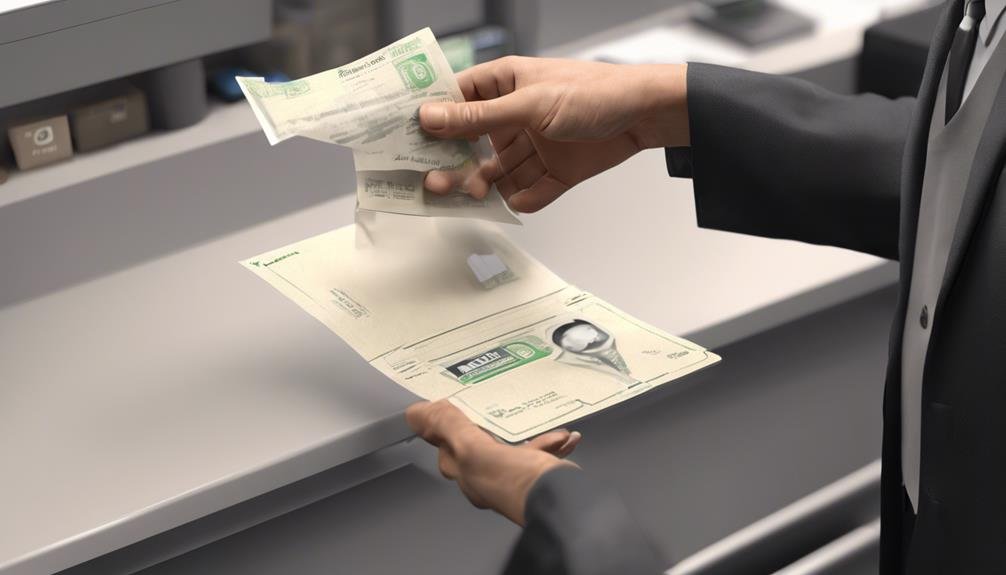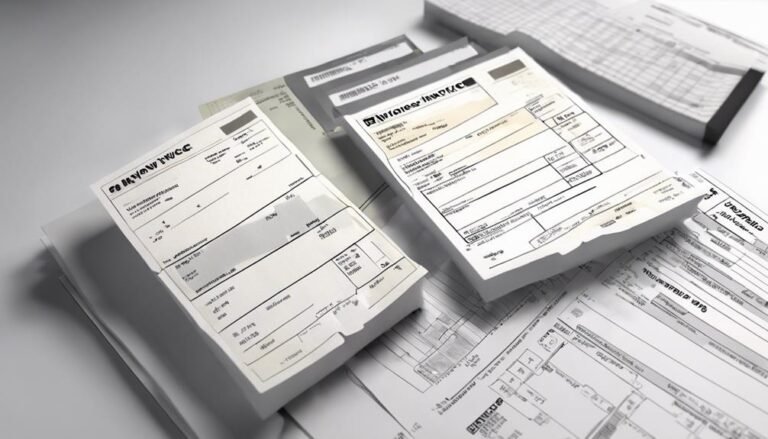What Is a Bank Confirmation Letter (BCL)? How to Get One
Bank Confirmation Letters (BCLs) are official documents from banks that confirm the existence of loans or credit lines, offering assurance to third parties in transactions. To obtain one, formally request it from the respective bank, following their validation procedures and requirements. BCLs play a crucial role in verifying financial eligibility, especially in significant transactions like real estate deals or mortgage applications. Understanding the steps to acquire a BCL can streamline the process and provide confidence in financial credibility. The letter's importance in securing mortgages and facilitating partnerships makes it an essential tool in financial transactions.
Key Takeaways
- BCL confirms loans or credit lines.
- Request BCL from the bank directly.
- Banks validate and issue BCL.
- Follow specific procedures and requirements.
- Inquire about the timeline for receiving the BCL.
Definition and Purpose of Bank Confirmation Letters
Bank Confirmation Letters, also known as BCLs, serve as official documents issued by banks to confirm the existence of loans or lines of credit for individuals, companies, or organizations.
The significance of BCLs lies in providing assurance to third parties regarding the borrower's financial standing and eligibility for borrowing funds. The process involves requesting the letter from the bank with appropriate signatures for validity.
The benefits of BCLs include reassuring sellers in large transactions, vouching for credit lines of business customers, and providing assurance of payment probability in joint venture projects.
Requirements for obtaining a BCL typically involve requesting it in person at a bank branch, via phone call, or through online platforms offered by some banks, ensuring a straightforward and reliable process.
Functionality and Importance of BCLs
The significance of Bank Confirmation Letters lies in providing assurance to third parties regarding borrowers' financial standing and eligibility for borrowing funds. They emphasize their importance and indispensability in financial transactions.
BCLs offer benefits such as assuring the availability of funds without being a payment guarantee, helping in securing mortgages during property purchases, and providing reassurance in joint venture projects. However, drawbacks include the need for authorization by the bank and limitations on their transferability.
The impact of BCLs is seen in the confidence they instill in parties involved in transactions, ensuring transparency and reliability in financial dealings. Overall, Bank Confirmation Letters play an essential role in verifying financial capabilities and facilitating secure transactions.
Common Applications and Scenarios for BCLs
Exploring the diverse applications and scenarios where Bank Confirmation Letters (BCLs) are commonly utilized sheds light on their integral role in financial transactions. BCLs play a vital role in real estate transactions by confirming the availability of funds for mortgages, providing assurance to sellers and partners in joint venture projects.
They are also instrumental in loan approvals and credit checks, assuring third parties of the borrower's financial credibility. In partnerships, BCLs vouch for the financial resources of the involved parties, facilitating smoother transactions.
Whether in securing loans, reassuring sellers, or validating financial capabilities in joint ventures, BCLs serve as essential documents in various business and financial interactions.
Comparison: Bank Confirmation Vs. Certification Vs. Verification Letters
Comparing Bank Confirmation, Certification, and Verification Letters reveals distinct nuances in confirming financial information accurately. While a Bank Confirmation Letter (BCL) validates the existence of a loan or credit line, a Certification Letter confirms an individual's account and funds with a bank.
Similarly, a Verification Letter serves the same purpose as a Certification Letter. The primary difference lies in the specificity of information each letter provides. BCLs are commonly used in securing mortgages, joint ventures, and large transactions, offering assurance of financial eligibility.
Certification and Verification Letters, on the other hand, focus more on verifying account details. Each type serves unique uses and benefits, catering to different aspects of financial confirmation and validation.
Steps to Obtain a Bank Confirmation Letter
To acquire a Bank Confirmation Letter, individuals or entities can initiate the process by submitting a formal request to their respective bank. This can be done either in person at a branch location or through a phone call. The obtaining process typically involves the bank's validation process to guarantee the authenticity of the request and the information provided.
It is essential to follow the bank's specific procedures and requirements when requesting a Bank Confirmation Letter to expedite the process. Banks may have designated departments or personnel responsible for handling such requests. It is advisable to inquire about the timeline for receiving the confirmation letter.
Conclusion
To summarize, a Bank Confirmation Letter (BCL) serves as an essential document in verifying the availability of funds for various financial transactions. Understanding the purpose, functionality, and common applications of BCLs is vital for maneuvering through the complexities of financial dealings.
Remember, as the saying goes, 'knowledge is power,' and having a clear understanding of BCLs can empower individuals and organizations in their financial endeavors.







